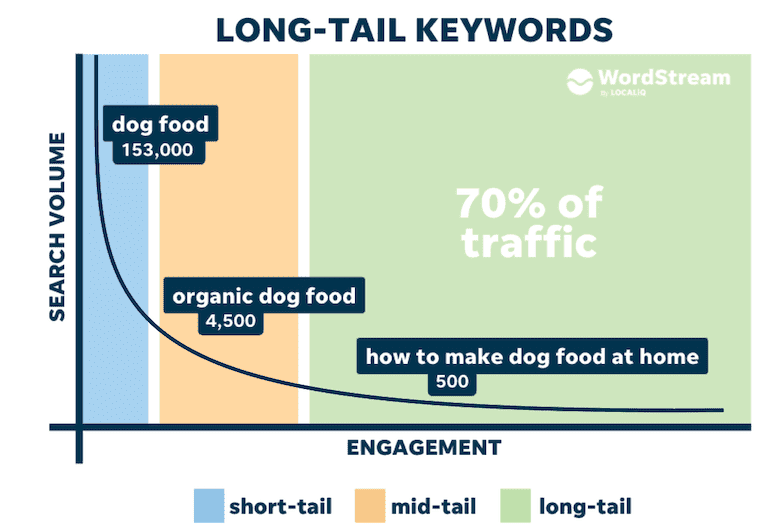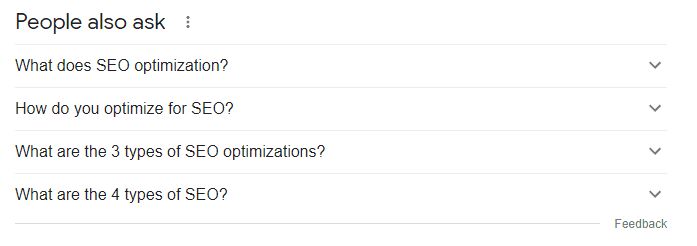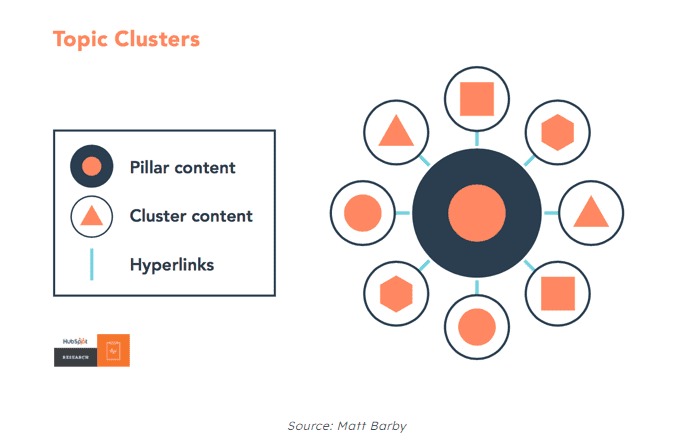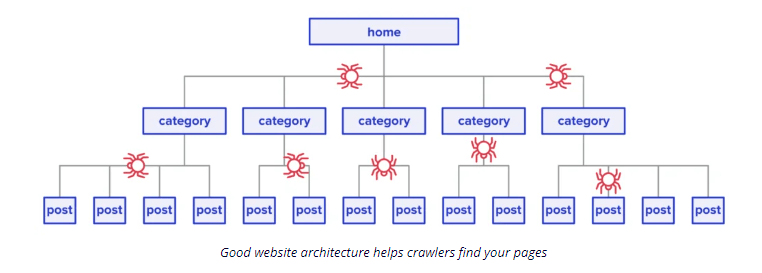In this article, we will discuss how you should adapt your website content to try to reach those top organic results that will bring your website the visibility needed to increase your organic traffic.
What is on-page SEO?
On-page SEO (also known as “on-site SEO”) is the practice of optimizing your website pages for users and search engines, with the goal of improving your organic visibility and traffic. The opposite, “off-page SEO”, consists of working on signals that will improve your SEO but that are happening outside of the website such as backlinks.
Why is on-page SEO important?
Improving your on-page SEO involves working on different aspects of your web pages content such as:
- The use of keywords in the content
- The use of long-tail keywords
- Development and use of qualitative content
- SEO optimized URLs
- Internal links
- Metadata, etc
We will come back to those elements in more detail later. The point is that if you optimize all those factors together, it will increase your page relevance and ultimately help improve your organic ranking.
Relevance is key!
Whether you’re working on keyword selection or metadata optimization, there is one common element you always need to keep in mind: relevance! You will see this term coming back a few times as it’s the common thread of this article.
To present it very simply, to be relevant the most basic rule to follow is that your page’s content needs to match the search query a user is going to look for. This includes the content on the page itself, inside the URL, the title tags, meta descriptions or in the headings. That way Google can easily match the search query to your webpage content.
Of course, in 2022, it’s not that simple. SEO is more challenging, you have more competition and if you want to increase your chances to rank in high positions, you will have to optimize several elements on your page and try to always be better than your competitors.
The different on-page SEO factors
Use of focus keywords in the page content
As we saw above, relevance is the common element of your on-page SEO strategy and this includes the use of your focus keywords within your webpage content.
First, start to define the keywords you want to rank for and the page you want to associate with them. Then ensure that those are present on the dedicated page. This might sound like a very basic rule but it’s often underrated and yet, it’s a pretty quick win!
Be sure to not use them too much either otherwise Google might see it as keyword stuffing which could negatively impact your ranking. The goal is to find the right balance.
Another piece of advice we can give is to make sure you are using your focus keywords in the first 150 words of your page content. Why? Both Google and users will give more attention to the first part of your page. They both need to quickly understand what your page is about when screening it. We’ll see below different elements you can use on your page to highlight your focus keywords and be sure you optimize your website SEO-wise.
Title tags
Also named “page titles”, title tags are tags that will define the title of your page, just like a title of a book or an article for example. When Google will look for a result that’s relevant to show for a user’s search query, it will look for a correspondence between the query and a webpage title (amongst other factors). Here we go again with relevance!
Let’s go through some advice:
First, verify all your website pages yourself and be sure they all have a title tag. If they don’t, Google will automatically use any text on the page and use it as a title tag, which will then be shown in the search results. It will most likely not be as relevant and as attractive compared to a very nice title tag you can write yourself, meaning you have fewer chances that users will click on it.
You can easily check your title tags using different SEO tools such as SEMrush or Screamingfrog. These tools will scan your website and also highlight pages with missing title tags. If you want to do a manual check, you can use browser extensions such as Meta SEO Inspector or SEO peek, which will give you a view of your metadata, including the title tag.

Once you’ve highlighted the pages that you need to work on, it’s time to write amazing title tags. Here are the points you need to keep in mind when writing them:
- Use your focus keyword: it’s an opportunity to use a focus keyword and improve your chances to rank for it
- Relevance to your page’s content: of course, the keywords you will use in the title tag also need to match the other on-page SEO element of your page
- Describe the content of the page: very basic, but when reading the title tags, both Google and the user need to understand what the page is about
- Match user search intent: when defining your page content and title tag, you need to know what your audience is searching for. Then build your title by trying to answer that search.
- Make them attractive to read and click on: don’t forget about the click-through rate impact. Ultimately you want the users to find the information they are looking for and make them click on that title tag in the search results to drive traffic to your site. So make it catchy! Adding a call-to-action or a question mark at the end for example can improve the click-through rate: “Looking for a home insurance?”
- The length: it’s recommended to respect a length of 60/65 characters to be sure your title tag will be fully displayed in the organic search results.
- Use your brand name: it will give more weight to your title and will catch users’ attention quickly, resulting in a higher click-through rate
Headings
Headings or headlines are used to bring structure to your webpage. You are going to use headings (H1) and subheadings (H2, H3, H4, etc) to give titles and sub-titles to the different paragraphs that your content is built with.
- Heading 1: is often used to define the title of the content or highlight what the content is about
- Headings 2 and 3: are used as subheadings
- Headings 4, 5 and 6: can be used for big content for example that will need a more developed structure
Headings are very important for different reasons:
1) Help users and Google understand the content: heading 1 is the top element that will be read, so try using a headline that represents your page content, it will help Google and users quickly understand what your page is about. With a descriptive heading, both should also be able to know if the content you’re proposing can answer a question or fit with the search query.
2) Improve user experience: headings are helpful in understanding how the content is organised on the page and how you need to read it. Usually, the first heading (headline 1) is bigger while the other headings are smaller. So headline 1 will catch the user’s attention first, and help them understand that this is the title of the content while other headlines are sub-titles. They are very helpful to understand the hierarchy of the content.
Headings are also useful to quickly understand what the different paragraphs will be about. By scanning the headings, the user should get a quick idea of the overall content of the page.

3) Improve accessibility: headings can also be very helpful for users with disabilities that use programs such as screen readers for example. A screen reader will scan a page’s content and read the page content orally, allowing people with sight issues to understand the content without seeing it.
On top of that, there are a few best practices that you can use when writing your headings:
- The length: Don’t make it too long. A length of 50-60 characters is ideal
- Make it unique: each of your pages needs to have a unique headline 1. If you have pages with identical or similar headings, you might make it harder for Google to identify which page is the most relevant for a specific search query. This can harm your rankings for that query.
- Look at the SERPs and what your competitors are doing: once you have listed your focus keywords and matched them with the right page, try to look for a few and see how results are showing in the SERPs and what headlines your competitors have written to guide you.
You can use the same tools we shared above to crawl your website and automatically get a list of your website pages that are missing or have duplicate headings.
Alt tags
Also named “alt text”, alt tags are a way to optimize your website’s images for SEO. Alt tags are attributes that describe the content or the function of an image. An image alt tag looks like this:
![]()
Alt tags are can also help in case an image is not loading. Imagine that your page and its content are loading, but the image itself is not. Well instead of seeing a broken image icon, the users will see alt text which will give them an idea about the image content without actually seeing it.
Alt texts are also helpful for accessibility. As for the headings, alt tags can also be helpful for users who are visually impaired. If they use screen readers, the program will read the alt text of the image out loud and allow users to understand it without seeing it.

Source: https://blog.hubspot.com/
Understandability and context: when correctly optimized, it’s very helpful for search engine crawlers who will read the tag, and understand what the image is about. More importantly, it gives them contextual information about the content of your page. In other words, search engines should be able to understand the connection between the image and your page content (and we’re back to relevance!). All of these will help search engines to index your images properly and make sure to show them to users for a relevant search query.
Here are a few tools which can help you highlight images on your site that are currently missing alt tags: seoptimer, seositecheckup, sitecheckerpro.
SEO optimized URLs
We also call them “SEO-friendly URLs”. The objective is to make the URLs of your page easily readable and understandable for Google and users. Along with your page content, headings, alt tags, etc, URLs are another opportunity that you can use to highlight your focus keywords and show to Google the relevancy between the user search query and the content you provide. We’ll see below a few tips on how you can build SEO-friendly URLs.
- Include your focus keyword: here as well the objective is to allow users and Google to understand quickly what your page is about just when reading your URL. On top of that, it’s another opportunity for you to show Google the relevance between your URL and your page content, title, headings, etc.
- Try to keep them short: avoid using URLs that are too long, and try to respect a max size of 115-120 characters. Too long URLs will also give the impression that the website is complicated to navigate through.
- Avoid unnecessary and unclear parameters: remove words or parameters (numbers, question marks, underscores, spaces, etc) that Google bots won’t be able to read and understand and that will add unnecessary extra characters to your URL. Words are everything both Google and users can understand.
- Use hyphens: if you are using several words in your URL don’t forget to separate them with hyphens. For example https://www.mysite.com/insurances/family-insurances.
- Show website structure: using an organized URL structure will help Google and the users to easily understand how your site is structured and the hierarchy between your pages: https://www.mysite.com/main-category/sub-category/product-page
Qualitative content
As discussed above, relevant content is a pillar of any SEO strategy. However, just creating content is not sufficient. Your content needs to be relevant and qualitative to outstand the competition. The key challenge is to satisfy both Google and your website users. Keep in mind that the more relevant the content is, the more likely you are to rank higher on the SERPs (search engine results pages).
Here is some advice we can share to create relevant and qualitative content:
- Use trustworthy resources: be sure to provide correct and up-to-date information to your users
- Make your content visually attractive to read: don’t hesitate to add images or a video. Or even better, create an infographic to illustrate the subject of your content
- Make it easy to read: avoid very long paragraphs and use headings. It will make it easier for the user to understand the subject of the paragraphs at first sight, but also the structure of your content
- Avoid keyword stuffing: we know it’s important to use your focus keywords inside your content but overusing it can be spotted by Google and could negatively impact your ranking
- Solve a problem: try to think about a subject or question you know your users might be interested in and bring them a solution or very relevant information
Long-tail keywords
What are long-tail keywords?
Unlike “head” or “seed” keywords, long-tail keywords are more specific and often longer keywords that can look like phrases. Here are some examples:
Head keywords:
- on-page SEO
- iced coffee
- holidays
Long tail keywords:
- how to optimise on-page SEO
- iced coffee recipes
- where to go on holidays in December

In some cases, long-tail keywords can indicate that people are in a more advanced research phase. Indeed, the more specific the search query, the more the users know what they are actually looking for or what need they want to answer.
Why use long-tail keywords?
Because these keywords are more detailed, they generally have a lower search volume than the broader keywords. But this doesn’t necessarily mean that you shouldn’t care about those low search volume keywords.
Target audience: Let’s say that you offer more specific products or services and succeed to match those specific queries to your website content then this is a good opportunity for you to rank on a specific niche of long-tail keywords.
Less competitive: Long-tail keywords are also easier to rank on. As there is generally less competition for long-tail keywords with little search volume, you will be more likely to rank in a high position. This is even more true if your website is new. In this case, ranking high on head keywords will be very difficult.
Easier to address: the more specific the keyword, the more you know how to match or answer it. It makes it easier for you to know what page you want to rank for and what information needs to be on that page to match the query. While if you’re trying to rank for a broader keyword, you will have to display more information on your page to be sure something will match the query and hope to rank with it.
Discover missing content on your site: doing keyword research with long-tail keywords can also help you discover content that might be missing on your site. Do the exercise to try to discover what your ideal customers are searching for, develop your keyword list & extend it with long-tail keywords. You might discover interesting questions or subjects that are currently missing on your site but that you could create and provide to your target audience. As we saw above, creating qualitative content is important for SEO and this can be a way to discover some interesting topics!
Higher conversion rates: as we saw above, people using more specific queries are often in a more advanced search phase, which can mean that they will have higher chances to convert when landing on your website.
“head” keywords on the other hand, with their very high search volume, are often complicated to position on because they are way more competitive. It will require more effort to try to rank at a high position for high-level keywords which will be more generic.
Those keywords would bring you more organic traffic because their search volume is higher but maybe not the audience you would like to see converting on your website. Whereas by using a more specific approach with long-tail keywords you know that users that will land on your page are in a more advanced research phase.
Whether you will choose for long-tail keywords will depend on your business. It will depend on your content and what you want to offer to your audience. In some cases, it’s just difficult to use long-tail keywords or not necessary. In other cases, “seed” keywords are needed to define your product or service so it’s just more relevant to try to rank on those.
How to find long-tail keywords?
Here are a few tips or tools you can use to help you define long-tail keywords:
Use the SERPs:
- auto-suggestion: when you start to look for something in Google, you will see automatic suggestions given by Google to finish your search. There you can easily find longer search queries.
- related searches: at the bottom of the page results you will see that Google displays “related searches”, all related to the search query you typed
- “people also ask”: when looking for something in Google, you will often see a section on the result page where Google displays questions people ask that are related to your research

This tool allows you to enter a keyword, filter per country and discover all kinds of questions people ask themselves about the keyword you entered. With this tool, you can easily discover “what, “where”, “how”, and “why”long-tail keywords.
With this free tool you can enter a keyword as well, filter by country and discover queries related to your own research. It gives you a list of queries but also topics that are often searched around that keyword.
You will need a paid license to be able to use all the features from SEMrush, but then you can have access to different tools (keyword overview, keyword magic tool, keyword gap). These will not only help you find long-tail keywords but will also help you discover what your competitors are ranking for.
Topic clusters
What are topic clusters?
Topic clusters are a way to organize your web pages. The idea is to categorize them by topics and then link them internally to other related topics. It creates a clean and organized architecture that will be easier to understand by Google and users. Concretely topic clusters are built with 3 important elements:
- Pillar content: this is the main subject of your topic cluster and gathers all the cluster contents. It’s the common element between your different sub-pages.
- Cluster content: these are the sub-pages. They are sub-topics, all related to your pillar content.
- Internal links: the links are the connexions between your pillar content and the cluster contents but they can also connect cluster contents between them.

What are the advantages?
Internal links: The main advantage of this technique is the use of internal links. To apply a silo structure, you will have to link pages together and internal links are what Google is using to navigate through your website, find then crawl and finally index your pages.
Authority: Internal links also mean link juice. Once your pages are linked together, link juice can be spread from one page to another. In other words, the authority of a page is being shared with another page and more authority will help the pages to be more visible to Google.
Understand the website structure: Another advantage is that silos will help Google to understand more easily the structure of the site and the relationship between the pages because the pages linked together contain related topics which mean contextual linking and this is something that can improve ranking.
Navigation: Lastly, this structure will make navigation easier for the users. They can easily go from a category to other subcategories and understand how the content is organized. If they can find the information they are looking for faster then you bring them a better user experience, which is another important ranking factor for Google.

Source: https://www.authorityhacker.com/
How to get started?
To get started with a silo structure, start with a keyword research which is related to your business and the product or service you provide to your users. Use the tools we shared above to create your keyword list. Split the head and the long-tail keywords.
The idea is to use the head keywords to find topic ideas for a pillar page for example. Keep in mind that the pillar page needs to stay broad enough so you can add the details on the cluster pages. You also want to avoid sharing all the important information on the pillar page to attract users to the sub-pages.
Then use the long-tail keywords to inspire you to find more specific topics, still related to your main subject, but that you can use to create cluster content pages. Once again, always keep in mind the relevancy! Your pillar content needs to match with your business of course and more importantly, the cluster contents below a pillar page need to be related to it. Don’t make users navigate from a pillar page speaking about coffee then bring them to a cluster page speaking about dogs for example. It’s not relevant for users but Google won’t like it either.
Conclusion
To conclude, it’s important to mention that on-page SEO is not a one-shot job. Maybe you’ve put effort into optimizing your web pages and now you think that you will reach the top positions in the SERPs once and for all. Unfortunately, that’s not how SEO is working.
With SEO you need to keep up with the changes and be able to adapt your website accordingly. Keep in mind that at every moment a change in Google’s algorithm or a competitor who is adapting his on-site SEO can dethrone you from the top positions!
You need to see your SEO project as a long-term investment. Plan to review your on-page SEO strategy periodically, review your website content, try new things, observe what your competitors are doing, and most importantly, think about what your users need!
Get our ramblings right in your inbox
We deepdive into hot topics across digital marketing and love to share.



